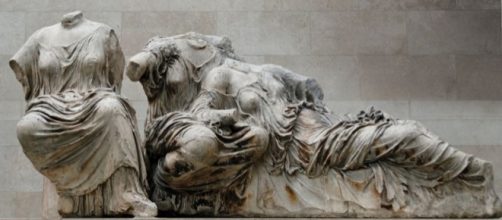One hundred sculptures by Rodin are coming to The British Museum in April to join a dozen Parthenon sculptures from the museum collection to make the case that the ancient Greek art inspired the Frenchman’s. (More about that in a moment). There are a couple of bothersome oddities about this exhibition that bear mentioning.
Out of context
For one thing, while it’s true that Rodin loved the Parthenon figures and history has him studying them from his first sighting in 1898 to his final year in 1917, he never went to Greece. He saw the temple art at the British Museum.
This brings up the other oddity: the Brit’s cache of marbles are held without Greece’s permission since 1801 when the 7th Earl of Elgin, Thomas Bruce, made off with 253 of these works from the temple and sold them to the museum.
Point made
None of that is Rodin’s fault, of course, and since his regard for the Parthenon sculptures had a lot to do with his work, the show has a decent point to make. So when the chief exhibit curator Ian Jenkins told the Art Newspaper that he hoped museumgoers will see the Greek sculptures through Rodin’s eyes, it’s a fair guess that they will.
In words and pictures
Rodin certainly spoke about the connection in recorded conversations with his protégé Paul Gsell. Referring to the ancient art.
he said that “mystery floats over it as it does all great art.” By example, he cited “The Three Fates,” a trio of seated goddesses, noting how their pose is “so serene, so august that they seem to be taking part in something of enormous import that we do not see.” And it is that very unknowable, he said, that makes art great and draws us to it.
Demonstration lesson
Rodin’s “The Kiss” will be included in the British show to exemplify how the “The Three Fates” influenced the look of the clasping couple. As Jensen put it, the figures in both sculptures appear to dissolve into each other. Both works also convey a marked sensuality, he said. The eroticism in “The Kiss’ is plain to see. The filmy drapery clings to the women’s erogenous zones creates a similar effect, though more subtlely.
And if you go by Rodin’s definition of great art - that it keeps its deepest secrets - the mystery of the Greek goddesses would make it great while his manifestly self-evident sculpture of an embrace would not.
The unasked question
As for how the ancient art held sway over Rodin, exhibit curator Celeste Farge went into detail, saying that the French sculpture fell under the spell of relics without heads or limbs because they “carried a power of expression that he sought to emulate in his own work.” Fair enough, but here’s the thing, he never saw the sculptures without their frame of reference - the Parthenon. Does it bother anyone else that what he saw at the British Museum was out of context and stolen?


